As a marketer, you’re probably staying updated on the latest artificial intelligence (AI) developments. One significant way AI is transforming marketing is through local search. Today, several generative AI (genAI) tools generate responses based on users’ questions, including answers to local queries.
So, what happens when someone uses genAI for a local search? What if they search for “Mexican food near me” or “Starbucks near me”? As genAI grows in popularity, is your brand optimized for these searches?
Keeping track of all the different AI-powered platforms can be overwhelming. That’s where this blog comes in!
What is Generative AI Used For?
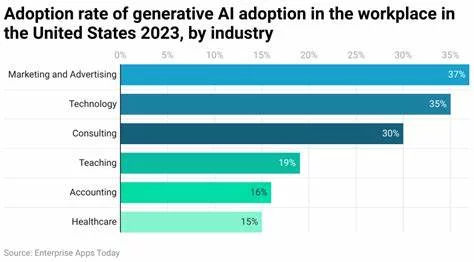
You may have heard the buzz around latest generative AI tools as ChatGPT or the new Bing, but there’s much more to generative AI than any single framework, project, or application.
Traditional AI systems are trained on large amounts of data in order to identify patterns and perform specific tasks that help people and organizations. Generative AI goes a step further on by using complex systems and models to generate new/novel outputs in images, text, or audio based on natural language prompts.
Key Applications of Generative AI:
- Text Generation
Text generation with AI has been developing since the 1970s. Recently, AI researchers have trained generative adversarial networks (GANs) to produce text that mimics human speech. A prime example is OpenAI’s ChatGPT, which has been trained on thousands of texts, books, articles, and code repositories and may respond with full answers to natural language prompts and questions.
- Image Generation
Generative AI models can create new images from natural language prompts, a popular technique with current tools and applications. Text-to-image generation aims to create images that accurately represent the content of a given prompt. For example, DALL-E 2 can generate a picture of “an impressionist style oil painting of a Shiba Inu dog giving a tarot card reading.”
- Video Generation
Generative AI models asStable Diffusion create new videos from existing ones by applying specified styles through text prompts or image references. Projects like stable-diffusion videos on GitHub offer examples and tips on making music videos and videos that morph between text prompts using Stable Diffusion.
- Programming Code Generation
Generative AI models can generate new programming code from natural language prompts, complete partially written code with suggestions, or translate code from one programming language to another. GitHub Copilot, for example, uses OpenAI’s Codex model to offer code suggestions directly within a developer’s editor. However, reviewing the generated code before merging it into production is essential.
- Data Generation
Generative AI can create synthetic data to augment existing datasets, increasing their size and improving machine learning models trained on them. This provides a layer of privacy since real user data is not used. Companies like Cruise and Waymo use AI-generated synthetic data to train perception systems for self-driving cars, preparing vehicles for real-world situations.
- Language Translation
Natural language understanding (NLU) models and generative AI provide on-the-fly translations. These tools help companies break language barriers and improve accessibility by offering support or documentation in various languages. Generative AI can understand the context of a source text and construct sentences in another language. This practice applies to coding languages, such as translating functions from Python to Java.
Learn about AI here.
Top Generative AI Tools of 2024:
1. GPT-4

GPT-4 is the latest OpenAI’s Large Language Model (LLM) iteration, succeeding GPT-3 and GPT-3.5. It is marketed as more inventive, accurate, safer, and stable than previous versions.
Key Features
- 100 Trillion Parameters: GPT-4 boasts an impressive 100 trillion parameters, significantly enhancing its capabilities.
- Improved Factual Performance: Enhanced accuracy in generating factual content.
- Enhanced Steerability: Better control over the output’s style and content.
- Image Input Capability: Can process and create responses based on image inputs.
- Multilingual Capability: Supports multiple languages, improving accessibility.
- Outperformance on Multiple Benchmarks: Consistently outperforms previous models across various benchmarks.
- Human-Level Performance on Various Benchmarks: Achieves performance levels comparable to humans in several tasks.
Pros
- Consistent and Reliable Time Saver: Streamlines tasks, saving time and effort.
- Cost-Effective and Scalable: Provides scalable solutions at a reasonable cost.
Cons
- Potential for Wrong Answers: Can occasionally generate incorrect information.
- Possibility of Bias: This may produce biased outputs.
Pricing
- Free Version
- Prompt: $0.03 per 1,000 tokens
- Completion: $0.06 per 1,000 tokens
- Paid Membership: $20/month
2. AlphaCode

AlphaCode is a transformer-based language model with 41.4 billion parameters, making it more complex than many existing models like OpenAI Codex. AlphaCode supports multiple programming languages, including C#, Ruby, Scala, Java, JavaScript, PHP, Go, and Rust, and excels in Python and C++.
Key Features
- Smart Filtering: Applies intelligent filtering after large-scale code generation.
- Transformer-Based Language Model: Utilizes a sophisticated transformer architecture.
- Datasets and Solutions on GitHub: Access to a wide range of datasets and solutions available on GitHub.
- Programming Capabilities: Proficient in Python, C++, and several other languages.
- Extensive Training Examples: Includes approximately 13,000 example tasks for training.
Pros
- Generates Code at an Unprecedented Scale: Capable of producing large amounts of code efficiently.
- Efficient Critical Thinking: Informed by extensive training and experience, supports effective problem-solving.
Cons
- User-Dependent Learning: Performance can vary based on user input and interaction.
- Potential for Errors: May produce incorrect code.
Pricing
- Free Tool: Available at no cost.
3. GitHub Copilot
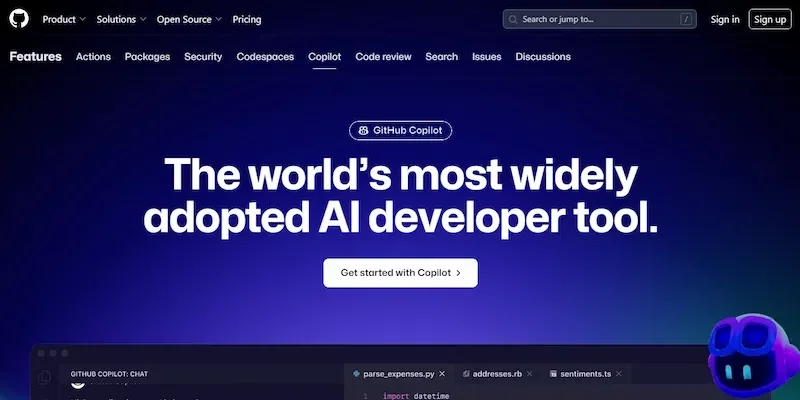
GitHub Copilot, developed in partnership with GitHub and OpenAI, is an AI-powered code completion tool designed to assist developers.
Key Features
- Intelligent Code Suggestions: Provides smart code suggestions to speed up development.
- Support for Multiple Programming Languages: Works with various programming languages.
- Learning from Open Source Code: Trained on many open source projects.
- Autocompletion for Documentation and Comments: Helps write comments and documentation efficiently.
- Integration with Integrated Development Environments (IDEs): Seamlessly integrates with popular IDEs.
- Rapid Prototyping and Exploration: Facilitates quick prototyping and exploration of ideas.
- Context-Aware Suggestions: Offers suggestions based on the context of the code.
- Collaborative Coding: Enhances collaboration among team members.
- Customization and Adaptation: Can be tailored to fit specific coding styles and needs.
- Continuous Learning and Improvement: Continuously improves through user interactions and feedback.
Pros
- Improves Productivity and Efficiency: Significantly enhances developers’ productivity.
- Supports various programming languages: This versatile tool is suitable for multiple languages.
Cons
- Code Quality and Security May Vary: The quality and security of the generated code can be inconsistent.
- Over-Reliance on Autocomplete: Developers might become too dependent on the tool.
Pricing
- Monthly: $10/month
- Annually: $100/year
4. Bard
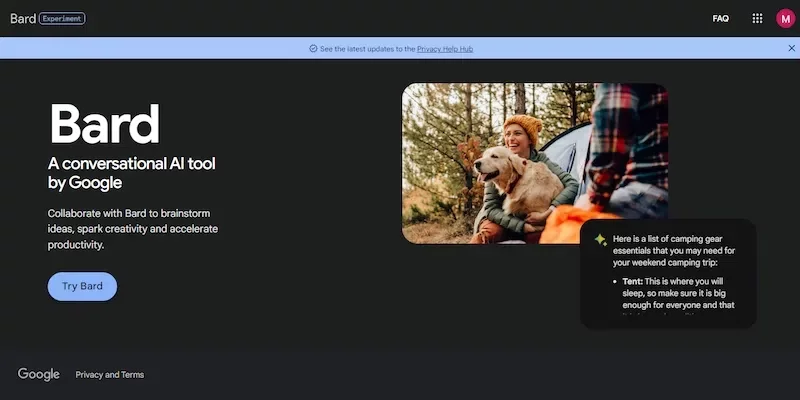
Bard is a chatbot and content generation tool developed by Google. Using LaMDA, a transformer-based model, Bard is Google’s counterpart to ChatGPT. It is currently in an experimental phase and accessible to a limited user base in the US and the UK.
Key Features
- Built on LaMDA: Utilizes Google’s advanced transformer-based model.
- Limited Access: Available to a small number of users in the US and UK through a waitlist.
- Rating System: Allows users to rate responses to improve quality.
- Google Account Integration: Accessible through individual Google accounts.
- Software Development Assistance: Capable of aiding in software development and programming tasks.
Pros
- Ethical and Transparent AI Development: Focuses on ethical AI practices.
- Extensively Pre-Tested: Undergoes rigorous testing by numerous testers.
Cons
- No Conversation History: Lacks features to maintain conversation history like ChatGPT.
- Limited Accessibility: Not widely accessible, restricted to specific user criteria.
Pricing
- Free Tool: This tool is free but limited to users meeting specific criteria.
5. Cohere Generate

Cohere is an AI company that enhances business operations through AI. Cohere Generate specializes in creating custom content for emails, landing pages, product descriptions, and other marketing needs.
Key Features
- Marketing and Sales Content Generation: Focuses on generating copy for marketing and sales purposes.
- Free Rate-Limited Use: Provides a limited free usage option.
- Ad and Blog Copy Creation: Generates effective ad and blog copy.
- Product Descriptions: Writes detailed and compelling product descriptions.
- Cloud Compatibility: Public, private, and hybrid cloud environments operate well.
Pros
- User-Friendly: Easy to navigate, enhancing client interaction.
- Insightful User Behavior Analysis: Provides valuable insights into user behavior, assisting them effectively.
Cons
- Session Issues: Sessions can sometimes get stuck.
- Bugs and Glitches: Experiences occasional bugs, such as difficulty answering calls.
Pricing
- Learning and Prototyping: Free
- Production:
- Default: $0.4 per 1M tokens
- Custom: $0.8 per 1M tokens
6. Claude
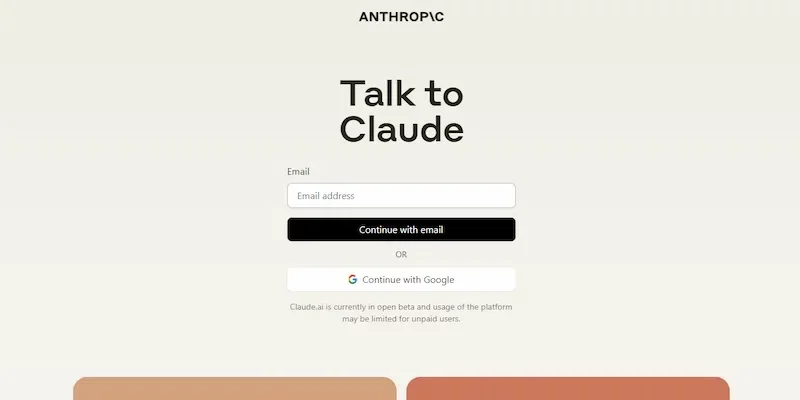
Claude, developed by Anthropic, is an advanced AI assistant designed to be helpful, fair, and safe.
Key Features
- Text Processing: Capable of handling vast amounts of text efficiently.
- Natural Conversations: Engages in conversations in a natural manner.
- Multilingual Support: Able to communicate in various common languages and programming languages.
- Workflow Automation: Streamlines and automates workflows for increased efficiency.
Pros
- High User Engagement: Promotes higher user engagement and feedback.
- Detailed and Understandable Answers: Provides detailed and easily comprehensible responses.
Cons
- High Difficulty Level: May pose challenges due to its complexity.
- Factual Accuracy: Occasionally provides incorrect answers to factual queries.
Pricing
- Claude Instant:
- Prompt: $1.63 per million tokens
- Completion: $5.51 per million tokens
- Claude-v1:
- Prompt: $11.02 per million tokens
- Completion: $32.68 per million tokens
7. Synthesia
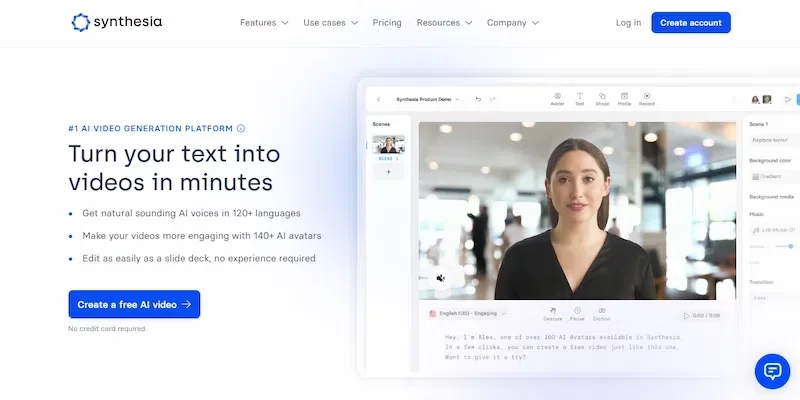
Synthesia is an AI-powered video platform that enables the rapid creation and distribution of professional-quality videos with minimal effort.
Key Features
- Content Management: Facilitates easy management of video content.
- Personalized Onboarding: Tailored onboarding process for users.
- Text Analysis: Analyzes text inputs for video creation.
- Single Sign-On: Simplifies user authentication with single sign-on capability.
- Enterprise-Level Scalability: Scales to meet the needs of enterprise-level organizations.
- Text Editing: Allows for easy editing of text inputs.
- Compliance: Compliance with SOC 2 and GDPR.
Pros
- High-Quality Avatars: Offers high-quality avatars with various facial and vocal expressions.
- Lifelike Videos: Generates lifelike videos with realism.
Cons
- Limited Customization Options: Offers limited customization features.
- Range of Gestures: Avatars have a limited range of gestures.
Pricing
- Personal:
- ₹1499.92/month (billed annually) or pay monthly
- $30 per month (billed monthly)
- Enterprise: Pricing is based on the number of seats.
8. DALL-E 2
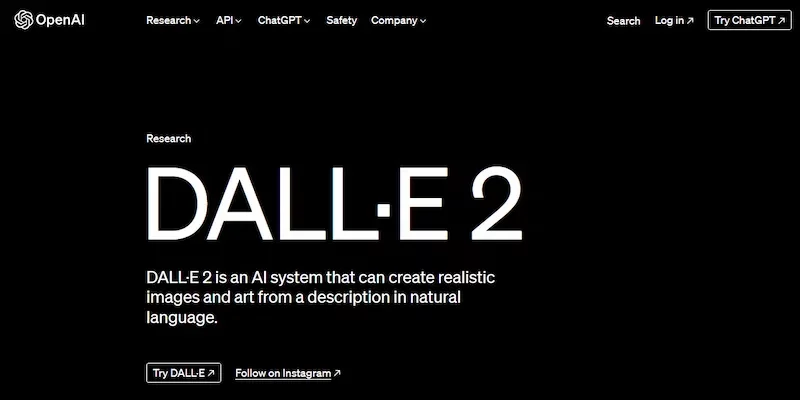
DALL-E 2, OpenAI’s latest generative AI tool for images and art, excels in producing photorealistic images and preventing harmful outputs.
Key Features
- Phased Deployment: Deployment based on learning phases for continuous improvement.
- Natural Language Inputs: This system accepts natural language inputs for generating images and art.
- Image Iterations: Provides multiple iterations of an original image.
- Inpainting Tool: Allows users to enhance existing pictures and request modifications.
- Developer API: Provides an API for developers to integrate DALL-E into their applications.
Pros
- Photorealism: Preferred for its ability to produce photorealistic images.
- Harm Prevention: Takes measures to prevent the generation of harmful outputs.
Cons
- High Price: Comes with a high price tag.
- Limited Creativity: Less creative compared to human artists.
Pricing
- 115 credits for $15 USD.
9. Type Studio

Type Studio is an online text-based video editor that operates directly within a browser. Users can upload videos to Type Studio, where it handles tasks like transcribing spoken words into text, eliminating the need for traditional video editing with a timeline.
Key Features
- Transcription Software: Automatically transcribes spoken words into text.
- Video Browsing: Allows users to browse video content seamlessly.
- Automated Subtitles and Closed Captions: Generates subtitles and closed captions automatically.
- Video Editing: Provides basic video editing functionalities.
- Cloud Storage: Stores footage securely online.
- Cloud Video Rendering: Utilizes cloud technology for efficient video rendering.
- Content Management Systems (CMS): Integrates with content management systems for streamlined workflow.
- Translation: Offers translation capabilities for multilingual content.
Pros
- Effortless Subtitle Addition: Easily adds subtitles to edited videos.
- One-Click Transcription: Transcribes text with a single click.
Cons
- High Price: Comes with a relatively high price tag.
- Precision Issues: May need more precision in transcription accuracy.
Pricing
- Free Plan: Includes 1GB of cloud storage space.
- Paid Plans: Range from $12 to $36 per month.
Strategies to Use Generative AI:
Generative AI tools are increasingly utilized by businesses to enhance operations, stimulate creativity, and stay ahead in today’s dynamic market. Here are some ways companies can leverage these tools:
- Creating Realistic Product Prototypes: Generative AI can generate detailed and realistic product prototypes, facilitating faster and more efficient product development processes.
- Generating Personalized Content for Customers: Businesses can use generative AI to create personalized content tailored to individual customer preferences, improving customer engagement and satisfaction.
- Designing Compelling Marketing Materials: Generative AI tools can help create visually appealing and compelling marketing materials, such as advertisements, social media posts, and website content.
- Enhancing Data Analysis and Decision-Making Processes: Generative AI tools can extract valuable insights and trends by analyzing large datasets, aiding businesses in making informed decisions and optimizing strategies.
- Developing New and Innovative Products or Services: Generative AI fosters innovation by generating ideas and concepts for new products or services based on market trends and consumer preferences.
- Automating Repetitive Tasks: Businesses can use generative AI to automate repetitive tasks, such as data entry or document generation, freeing up time for employees to focus on more strategic tasks.
- Streamlining Operations: Generative AI tools can streamline various operational processes, improving efficiency and reducing costs across different organizational departments.
- Gaining a Competitive Edge in the Market: By harnessing the power of generative AI, businesses can differentiate themselves from competitors by offering unique and innovative solutions to customers.
- Enhancing Creativity: Generative AI encourages creativity by providing inspiration and generating novel ideas, helping businesses think outside the box and explore new possibilities.
Conclusion:
If you’re intrigued after learning about the top examples of Generative AI tools, consider delving more deeply with a specialized course. The Caltech Post Graduate Program in AI and Machine Learning, offered by Simplilearn, is a comprehensive and respected program designed to equip students with the skills necessary to excel in artificial intelligence.
This program provides a thorough understanding of AI concepts, machine learning algorithms, and their real-world applications. The curriculum is curated by industry professionals and delivered through a flexible online platform. By enrolling in this program, individuals can advance their careers, explore exciting opportunities across various sectors, and contribute to groundbreaking AI and machine learning advancements.
FAQs on Generative AI:
Are there any ethical concerns associated with generative AI?
Ethical concerns surrounding generative AI include issues related to the potential misuse of generated content, such as deepfakes, and concerns about bias in training data and the potential for AI-generated content to be used for malicious purposes.
What are the limitations of generative AI tools?
Some limitations of generative AI tools include the potential for generating low-quality or inaccurate content, the need for large amounts of training data, and the computational resources required for training and inference.
How can businesses mitigate the risks associated with using generative AI tools?
Businesses can mitigate risks by implementing robust data governance policies, ensuring transparency and accountability in AI systems, regularly evaluating and monitoring AI-generated content, and adhering to ethical guidelines and regulations.



